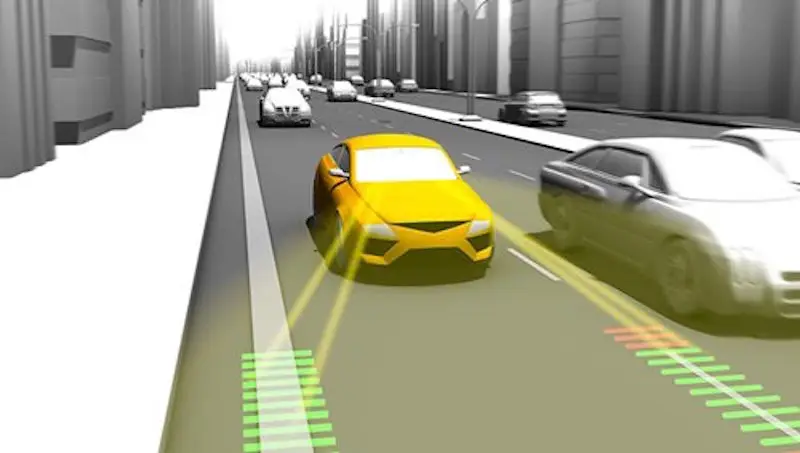How does a car’s lane change assist system work?


Car Lane Change Assist: How Does It Work?
Car safety technology has come a long way in recent years, with various systems designed to enhance driver safety and prevent accidents. One such system is the car lane change assist, which helps drivers change lanes safely and efficiently. In this article, we will explore how a car’s lane change assist system works and its importance in ensuring road safety.
What is a Car Lane Change Assist System?
A car lane change assist system is a safety feature that uses sensors and cameras to monitor the vehicle’s surroundings and provide assistance to the driver when changing lanes. It is designed to detect other vehicles in the blind spot and alert the driver to potential hazards, reducing the risk of collisions during lane changes.
How Does Lane Change Assist Work?
The lane change assist system utilizes a combination of sensors, cameras, and advanced algorithms to detect and analyze the vehicle’s surroundings. Here is a step-by-step breakdown of how it works:
1. Sensor Detection: The system uses sensors, typically located on the side mirrors or rear bumper, to detect other vehicles in the blind spot. These sensors emit electromagnetic waves or use ultrasonic technology to measure the distance between the car and nearby objects.
2. Monitoring the Blind Spot: Once the sensors detect a vehicle in the blind spot, the system continuously monitors its position and trajectory. This information is then processed by the system’s algorithms to determine if it is safe to change lanes.
3. Visual and Audible Alerts: If the system detects a potential hazard, it alerts the driver through visual and audible signals. These alerts can be in the form of flashing lights on the side mirrors, warning icons on the dashboard, or audible beeps.
4. Steering Intervention: In some advanced lane change assist systems, if the driver ignores the initial warnings and attempts to change lanes, the system can provide steering intervention. This means that the system can automatically steer the vehicle back into its lane to prevent a collision.
The Importance of Lane Change Assist
Car lane change assist systems play a crucial role in enhancing road safety. Here are some key reasons why they are important:
1. Blind Spot Detection: The primary function of lane change assist is to detect vehicles in the blind spot. This is especially useful when changing lanes on highways or busy roads, where blind spots can be a significant safety concern. By alerting the driver to the presence of other vehicles, the system helps prevent accidents caused by sudden lane changes.
2. Collision Avoidance: Lane change assist systems not only detect vehicles in the blind spot but also analyze their trajectory and speed. This allows the system to predict potential collisions and provide timely warnings to the driver. By alerting the driver to potential hazards, the system helps prevent accidents and reduces the severity of collisions.
3. Improved Driver Confidence: Changing lanes can be a stressful maneuver, especially for new or inexperienced drivers. Lane change assist systems provide an extra layer of confidence and reassurance by actively monitoring the surroundings and alerting the driver to potential dangers. This can help reduce driver anxiety and improve overall driving experience.
4. Enhanced Convenience: In addition to safety benefits, lane change assist systems also offer convenience to drivers. By automating the detection and warning process, the system reduces the need for constant manual checks of the blind spot. This allows the driver to focus more on the road ahead and reduces the chances of distractions.
Conclusion
Car lane change assist systems are an important safety feature that helps drivers change lanes safely and avoid collisions. By utilizing sensors, cameras, and advanced algorithms, these systems detect vehicles in the blind spot and provide visual and audible alerts to the driver. They play a crucial role in enhancing road safety, improving driver confidence, and reducing the risk of accidents during lane changes. As car safety technology continues to evolve, lane change assist systems are becoming increasingly common in modern vehicles, contributing to a safer driving experience for all.
Recent Posts
How do I create an engaging and informative online quiz or assessment?
Creating an engaging and informative online quiz or assessment can be a powerful tool for… Read More
What are the most effective methods for managing and reducing work-related stress in the hospitality industry?
Work-related stress is a common issue in the hospitality industry, where employees often face long… Read More
How can I improve my assertiveness and communication skills in a leadership position?
In a leadership position, assertiveness and effective communication skills are crucial for success. Being able… Read More
What are the key elements of a successful employee recognition and rewards program?
Employee recognition and rewards programs play a crucial role in motivating and engaging employees, as… Read More
How do I effectively manage and respond to customer feedback and reviews?
Customer feedback and online reviews play a crucial role in shaping a company's reputation and… Read More
What are the best strategies for effective time management as a stay-at-home parent?
Effective time management is crucial for stay-at-home parents who juggle multiple responsibilities on a daily… Read More